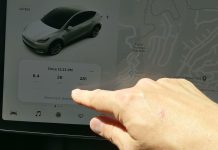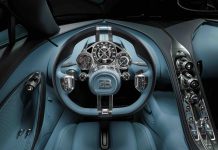Everyone’s jumping on the “how to save gas” bandwagon – understandably. It’s on everyone’s mind. But that doesn’t mean you ought to believe everything you read. 
For instance, there’s the bogus:
* Regular tune-ups will save you gas –
Most late model cars (that’s anything built over about the past ten years or so) generally don’t need regular tune-ups. Spark plugs last as long as 100,000 miles; ignition systems are largely maintenance-free and the car’s onboard computer automatically adjusts things like the air-fuel ratio and ignition timing to optimize performance and economy. Unless the “check engine” light comes on, or you notice a change in the way the engine sounds/performs (or your mileage suddenly decreases) you should not worry about tune-ups until the time/mileage interval specified in your vehicle owner’s manual.
Until then, just change the oil and air filter (when needed) and keep the tires inflated. That’s usually all you need to worry about.
* Warm up your car before you drive off –
In the days when cars were fed fuel by carburetors (and took several minutes to reach normal operating temperature) this was a good rule to follow. But cars haven’t come with carbs since the late 1980s – a quarter century ago – and a modern car reaches normal operating temperature within moments of start-up. Idling the engine for several minutes actually wastes fuel because it takes longer for the engine to warm up – and (among other things) reduces the efficiency of the catalytic converters, which take longer to “light off” (reach the temperature necessary for them to efficiently process the exhaust) which in turn reduces operating efficiency – and thus, increases fuel consumption as well as emissions output.
The right thing to do is to get in, start the car – and drive it.
* Using lower-cost “regular” gas saves money –
This is only true if your vehicle was designed to burn regular unleaded. If, however, you own a vehicle designed to run on high-octane premium fuel, filling up with regular is a bad idea because your engine’s efficiency will be reduced – and you’ll probably end up getting worse gas mileage, as well as reduced performance. The engine’s computer will dial back ignition timing and other parameters to compensate for the lower octane fuel, which means it will not be operating at peal efficiency – which means, you end up using more gas. The kicker is, you also get dialed-back performance. 
It’s just as counterproductive, on the flip side, to burn premium gas in an engine built to run on regular. You won’t get more performance – and you may see a mileage loss – as well as the loss you’ll pay up front for buying the higher-cost premium fuel.
To maximize the fuel economy potential of any engine, use the type of fuel it was designed to burn – whether that fuel is 87 octane regular or 93 octane premium.
* Fuel saving gadgets –
Whether poured in or bolted on, the “miracle mileage boosters” you see advertised on TV or online have (so far) invariably been shown to be bogus. Think about it: If the car companies could up the fuel economy of their cars by 5 or 10 MPG (or even 2 or 3 MPG) simply by adding a $10 magnet to the fuel line or a “vortex” to the air intake, why would they not install the thing at the factory? They’d meet their CAFE compliance targets (or get closer) at little to no cost and without having to re-invent the wheel. But they don’t – and that ought to tell you something. 
Then there’s the legit:
* Get the garbage out of your trunk –
The more weight you’re hauling, the more gas you’ll be using. Only carry with you what you need to carry with you. Don’t use your trunk or pick-up bed for long-term storage. You might even consider removing the full-size spare (if your car came with one) and carrying a couple of cans of Fix-a-Flat instead. If you have a pick-up, you can probably remove the tailgate and shed 50 pounds or so (which is what will save you gas, not improved airflow).
* Switch to synthetic lubricants –
Not just engine oil but also manual transmission and axle lube. Synthetics have better flow characteristics at extreme temperatures of cold and hot, which reduces friction, which increases fuel efficiency (as well as performance) and also reduces wear. The difference in smoothness/operating characteristics, synthetic-equipped vs. not, is especially noticeable in very cold weather. The math also works out more favorably when we’re talking manual transmission/axle lubes – which typically only need to be done once every 30,000 miles or so (and maybe much longer than that) vs. engine oil changes, which usually need to be done once every 6,000 miles or so.
Finally, the maybes:
* Shut off your engine if you expect to be idling for more than 30 seconds or so –
Hybrids save gas by shutting down the gas side of the gas-electric powertrain when the car comes to a stop. You can do the same thing without all the high-tech assistance of a computer – or the expense of buying a new Prius. Shutting off the engine when you find yourself stuck in traffic or hit a really long red light can reduce your overall fuel consumption by as much as 5 percent. Just be aware that you may also reduce the life of your starter motor – and you’re working your car’s battery harder than you otherwise would, which could mean it dies sooner than it otherwise would have. 
* Don’t run your AC; roll down your windows instead –
This is a “maybe yes, maybe no” fuel saving suggestion. Older vehicles – generally, those built prior to the mid-1980s – had AC systems that were very power hungry, with huge compressors that took a lot of energy to drive them. If you’ve driven such a car, you may recall actually feeling the load on the engine when the AC was turned on. If you have one of these old cars, you can indeed save some gas by limiting the use of your AC. But with modern cars, the potential fuel savings are lower because the AC systems in modern cars are much more efficient. They don’t load the engine nearly as much – and you might actually end up burning more fuel by rolling down the windows and increasing the car’s aerodynamic drag. Rule of thumb: If your car is a 1990 model or newer, running the AC probably won’t increase your fuel consumption much – if it’s even noticeable at all.
* Keep your car washed and waxed –
Some people believe a clean car drives better than a dirty one – and they may be on to something. A smooth, clean surface cuts through the wind more efficiently than a bumpy lumpy one. Increased wind resistance means higher fuel bills – though the increase is probably very small, for the most part. With one exception: If you have a truck or SUV and have taken it off-roading, caked-on mud clinging to the undercarriage and fenderwells can add a surprising amount of weight to the vehicle – as well as increase drag. A session with a power washer can get your fuel bills back to where they ought to be. 
Throw it in the Woods?










The only tune up item that WILL make a huge difference on gas millage is make SURE you change your primary o2 sensor(s) every 7-8 years. Further, one of the most common codes I see is “Catalytic converter efficency” codes. That means it’s clogged. A cat won’t clog up and need replacing unless it’s had raw fuel going out through it. The old saying is, “A cat doesn’t die.. it’s murdered.” Just go up to a 2002 vehicle and get a waft of the exhaust. I can literally smell an old o2 sensor that needs changing: it smells like gas coming out the tailpipe. Because that’s what it’s causing.
Change your o2 sensors, it’ll pay for itself before the year is over.
Some of the information in your article may be right on, but by rubber stamping some categories which such absolute statements is not in the best interest of your readers. In hot climates, an A/C can decresase fuel economy by up to 20% or more even in newer cars (2009, 2010), especially if they have small engines where the A/C creates a significant load compared to the engine size.
Regarding the fuel saving devices, you couldn’t be more wrong. Just remember one size doesn’t fit all and a properly designed system for your vehicle can improve efficiency. After trying several systems I found one that increased my fuel economy by over 30%. I was so impressed I tested them on our municipal bus fleet – they got 38% increased economy. Since there were so many skeptics in the US, I brought them down to Brazil. After over a year of testing, we are installing these on major bus and truck fleets and at ethanol refineries and they are getting from 8% to 37% or more increased economy plus 80% reduction in opacity. The Brazilian government is preparing to test these and possibly mandate them for all municipal bus fleets. In other words, if you try one “seen on TV” fuel saver and it doesn’t work, this doesn’t mean all fuel savers won’t work. You just have to find the right one.
Just as with medicine there are alternative treatments that are criticized by the mainstream, but produce verifiable results, so there are some fuel savers, such as Greenway’s systems that are producing verifiable documented results. Don’t always throw out the baby with the bathwater!
I think you are confusing “regular” and “frequent”. You should have regular tune-ups – at the regular intervals specified in your vehicle owner’s manual.
There’s an old joke about a pub that offered regular drinkers one free drink at Christmas. Someone came in and asked for one, and was challenged. “Of course I’m a regular”, he replied, “I come in regularly every Christmas!”
True! Thanks for the clarification!
regarding the regular vs. premium gas, does it matter if you’re at high altitude? The owner of a used car dealership said high octane gas in luxury cars designated to use premium gas is pointless in Denver, where I live. Is this true?
Nice site, BTW. Found you via your link on Daily Crux. Two of my favorite things: Motorcycles and liberty. Peace!
Hi PA!
I’d go with the vehicle manufacturer recommendations over what a used car dealership told you. I’ve never heard of an “exception for altitude” for vehicles that otherwise require (or recommend) it. One factor that used to be an issue was that air-fuel ratios set for say sea level would not be right for 7,000 ft. (and vice versa). But that was in the pre-computer and carburetor days. All late model cars have both fuel injection and computers and automatically adjust the A-F ratio to compensate for altitude. Bottom line, if the car manufacturer says use premium, I’d use premium. Not using it won’t cause any damage (because the computer will sense the lower octane fuel and dial back ignition timing and so on to prevent spark knock) but it will reduce performance and economy.
Good to have you with us!
High altitude gas stations have lower octane for sale anyway. I’m used to buying 85 octane gas, but when my brother in law saw it, he made a comment about the “crap gas” they sell out here, like it was a scam or something. I used to run mid-grade gas at sea level and got better mileage. Up here low grade is fine and gets the same performance and mileage as mid-grade in my 2002 grand-am.
YMMV.
I’ve often heard that the brief warm up was not so much for fuel consumption, but to allow for lubricants to get fully into the system. Another factor is piston temperature, a cold piston has a lot more clearance in the cylinder, so is more vulnerable to wear.
You ever change your oil when the weather is freezing.. Trying to get new oil in takes forever because it flows like 240 weight gear oil! I let all my units warm up before rolling.
I wouldn’t even notice because I use synthetic oil and it’s usually close to room temp when I bring it outside.
On another note, I see I am not the only person who has noticed that the media have been using the same ‘how to save gas’ reports since 1975. 🙂
oops lost a sentence… When my ’73 was a daily driver, yeah the oil got thick. I remember one mazda my parents had… the oil practically solidified and the car would not start. Blew a heat gun down the dipstick tube for awhile and then it started. But since I started using synthetic oil… forget about it. I just start driving.
Heated, insulated garage my son!
Or, failing that, just warm the oil jugs up by immersing them in some warm water on the stovetop before you go outside to do the oil change.
I was meaning that when the car first starts that the oil in the pan is super thick. Giving it a couple minutes to warm up seems to help. Maybe it just helps me mentally… I cooked my body and brain this weekending doing yard work and taking out my stereo system in my toy car. I’m brain dead right now. I don’t think the beer helped either!
I also let it idle some first thing in the mornining, and especially when cold. I want the oil flowing into the bearings before I put a load on them. Less wear that way. Thirty seconds or less is as long as I take. Maybe a minute at zero… Gee, here in Portland, Oregon, I have never seen that temperature.
I do have memories of the old carbureted cars. They would run like crap when it was cold. Warming those up really helped.
Fuel injection is a wonderful thing.
I’ve been using Fuelly to help monitor fuel consumption on my Honda Civic. So far been averaging around 33 miles to the gallon. Fuelly. is pretty good and recommend it to all. The one thing been doing lately is keeping tires pressurized at the maximum amount. One thing that I noticed is gas prices are steadily coming down again.